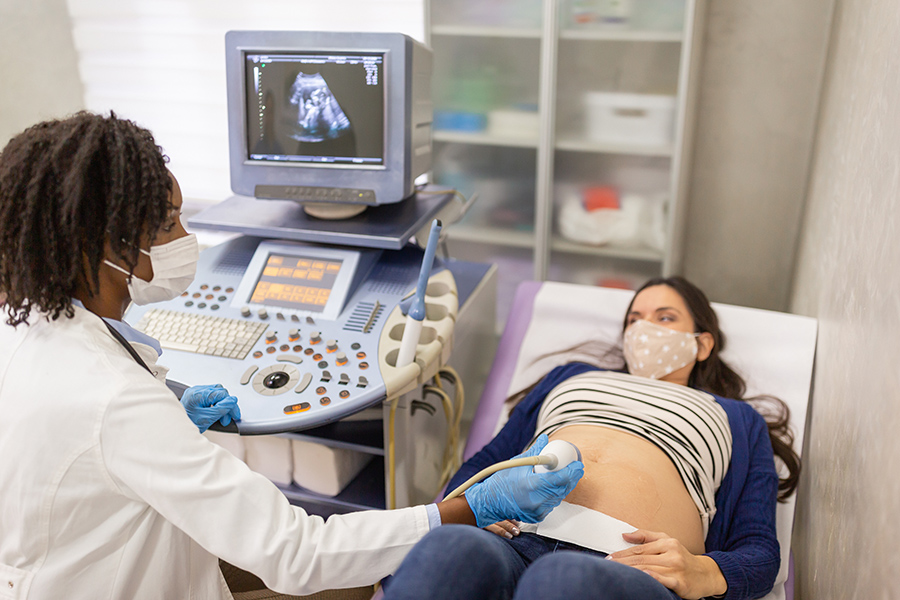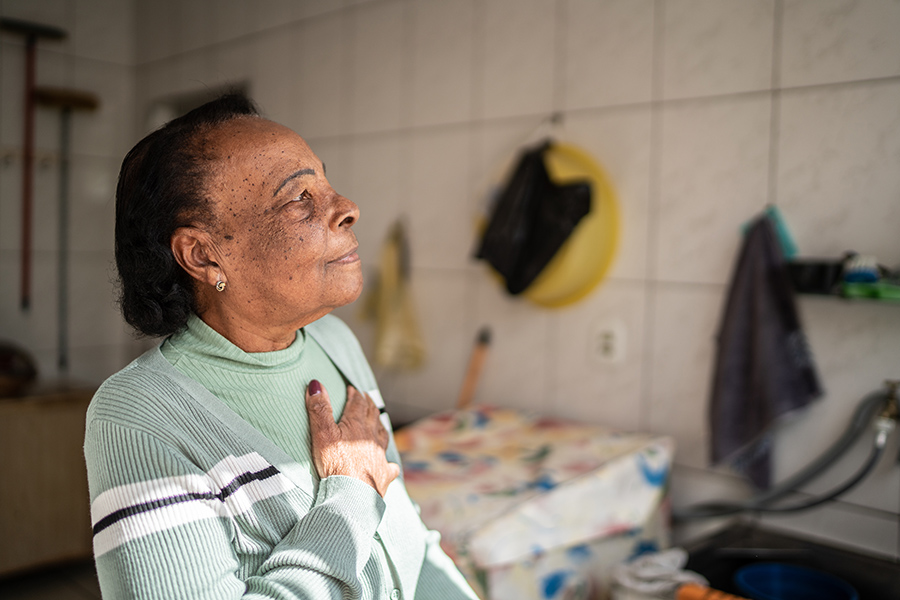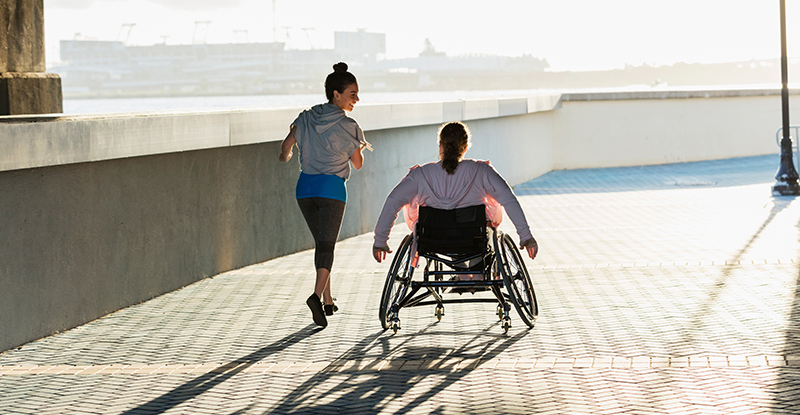The word “defect” is a difficult word, especially when you are a parent. Medically speaking, birth defects are structural changes present at birth that can affect almost any part of the body. They can affect how the body works, looks, or both. Advancements in medicine and surgery have led to better survival rates, and thankfully more children born with birth defects grow up to lead full lives. Birth defects are common, affecting one in every 33 babies (about 3% of babies) born in the United States each year. This means a baby is born with a birth defect in the U.S. every 4 1/2 minutes.
Birth defects can occur in any family regardless of race, health history, economic status or level of education. There are many different kinds of birth defects, including congenital heart defects, defects of the brain and spine, chromosomal abnormalities and more. Some have only a minor and brief effect on a baby’s health, while others have life-threatening or life-long effects. These effects can often be improved by early detection, intervention and care. Medical equipment such as feeding tubes – which can be used temporarily or long term – are a good example of how technology has grown to improve the lives of those navigating birth defects.
Types of Birth Defects
Below is a list of the most common birth defects in the United States:
Brain/Spine Defects
| Specific Defects | Frequency |
| Anencephaly | 1 in every 4,647 births |
| Encephalocele | 1 in every 10,502 births |
| Spina bifida | 1 in every 2,758 births |
Eye Defects
| Specific Defects | Frequency |
| Anopthalmia/micropthalmia | 1 in every 5,243 births |
Heart Defects
| Specific Defects | Frequency |
| Atrioventricular septal defect | 1 in every 1,859 births |
| Coarctation of the aorta | 1 in every 1,795 births |
| Common truncus (truncus arteriosus) | 1 in every 15,696 births |
| Double outlet right ventricle | 1 in every 5,997 births |
| Ebstein anomaly | 1 in every 13,047 births |
| Hypoplastic left heart syndrome | 1 in every 3,841 births |
| Interrupted aortic arch | 1 in every 16,066 births |
| Pulmonary valve atresia and stenosis | 1 in every 1,052 births |
| Pulmonary valve atresia | 1 in every 7,104 births |
| Single ventricle | 1 in every 13,351 births |
| Tetralogy of Fallot | 1 in every 2,171 births |
| Total anomalous pulmonary venous connection | 1 in every 7,809 births |
| Transposition of the great arteries | 1 in every 2,695 births |
| Dextro‐transposition of great arteries | 1 in every 3,413 births |
| Tricuspid valve atresia and stenosis | 1 in every 5,938 births |
| Tricuspid valve atresia | 1 in every 9,751 births |
Mouth/Face Defects
| Specific Defects | Frequency |
| Cleft lip with cleft palate | 1 in every 1,563 births |
| Cleft lip without cleft palate | 1 in every 2,807 births |
| Cleft palate | 1 in every 1,687 births |
Stomach/Intestine Defects
| Specific Defects | Frequency |
| Esophageal atresia/tracheoesophageal fistula | 1 in every 4,144 births |
| Rectal and large intestinal atresia/stenosis | 1 in every 2,242 births |
Muscle/Bone Defects
| Specific Defects | Frequency |
| Clubfoot | 1 in every 593 births |
| Diaphragmatic hernia | 1 in every 3,591 births |
| Gastroschisis | 1 in every 1,953 births |
| Limb defects | 1 in every 1,943 births |
| Omphalocele | 1 in every 4,175 births |
Chromosome (Gene) Abnormalities
| Specific Defects | Frequency |
| Trisomy 13 (Patau syndrome) | 1 in every 7,409 births |
| Trisomy 18 (Edwards syndrome) | 1 in every 3,315 births |
| Trisomy 21 (Down syndrome) | 1 in every 707 births |
* Mai CT, Isenburg JL, Canfield MA, Meyer RE, Correa A, Alverson CJ, Lupo PJ, Riehle‐Colarusso T, Cho SJ, Aggarwal D, Kirby RS. National population‐based estimates for major birth defects, 2010–2014. Birth Defects Research. 2019; 111(18): 1420-1435. [Read article]
The Role of Nutrition and Prenatal Care
Many – but not all – birth defects occur in the first 3 months of pregnancy, when major structural growth is taking place. Medical professionals are aware of what causes some defects, such as fetal alcohol syndrome. But the causes of most birth defects are still unknown.
Here is what we do know: although not all birth defects and genetic disorders can be prevented, the risk for many types of birth defects can be reduced through healthy lifestyle choices and medical care before and during pregnancy. About half of all pregnancies are unplanned, contributing to a late start into prenatal care. This causes many parents to miss the crucial early weeks of embryonic development. Parental health prior to pregnancy can affect the risk of having a child with a birth defect. Food intake, lifestyle choices, factors in the environment, health conditions and medications before and during pregnancy all can play a role in reducing the risk.
Studies have demonstrated several important steps people can take to lower their risk of having a baby with a birth defect. Those who are pregnant or may become pregnant are advised to:
- Take 400 micrograms of folic acid daily.
- Get a medical checkup before pregnancy, and talk to a health care provider about any medications you are taking: both prescription and over-the-counter.
- Avoid travel while pregnant to areas with high risk for exposure to certain viruses, such as the Zika virus.
- Eat a healthy diet and work to maintain a healthy weight.
- Avoid tobacco smoke, including vaping and second-hand smoke.
- Stop drinking alcohol prior to pregnancy and during pregnancy. If pregnant, stop drinking as soon as possible.
- Avoid illegal and recreational drugs (including marijuana/medicinal marijuana, which is legalized in some states and sometimes marketed as beneficial for pregnancy nausea).
- Avoid toxic substances at work or at home.
- If possible, keep chronic illnesses such as diabetes, seizure disorders or phenylketonuria (PKU) well managed and under control .
- Know how to prevent infections during pregnancy.
- Be proactive in identifying and treating fever when ill or after getting a vaccine. Treat fevers higher than 101oF with Tylenol® (or store brand acetaminophen), and avoid hot tubs, saunas, or other environments that might cause overheating.
However, even with optimal self-care, many birth defects and chromosomal abnormalities are unavoidable. If you have a child or children with birth defects, visit our GROW community for robust resources, tools and support.
For more information, you can also visit the Centers for Disease Control and Prevention (CDC) National Center on Birth Defects and Developmental Disabilities, March of Dimes (MOD) Foundation, National Institutes of Health (NIH) and the National Birth Defects Prevention Network.























